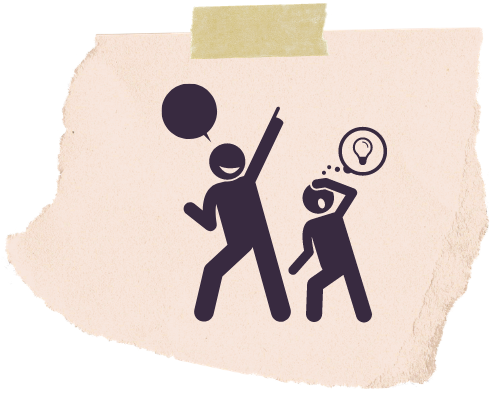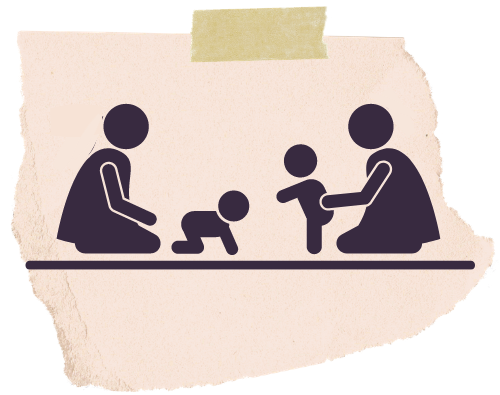Reveal Priorities and Strategies
The family and EI professional take time to reflect on all that was shared when interacting and observing naturally and uncovering family’s intentions. The family and EI professional first reflect separately on their own. Then, the family and EI professional reflect together, which results in an outline of the family’s priorities and strategies.
Why reveal priorities and strategies?
- To utilize family strengths in a very intentional way.
- To articulate the family’s true priorities in the family’s own words.
- To develop a shared understanding of the family’s priorities.
- To identify strategies together that could meet those priorities.
- To affirm the family’s doing, thinking, and feeling – their strengths – that can build family confidence and competence.
Bonnie, Carol, and Kerry discuss what it means to Reveal Priorities and Strategies. They talk about how this approach is different from usual planning practices and the mindset needed to do so.
What are we revealing?
We (family and EI professional) are revealing the family’s priorities and the strategies the family uses to meet those priorities. The family’s priorities are revealed such that priorities emerge rather than asking “big” questions such as, “What would you like to see your child learn or develop?”or “What are your hopes and dreams for your child?” and in a way that minimizes professional opinions of what the family priorities might be.
We reveal the family’s priorities by:
- The professional sharing the words the family used when uncovering the family’s intentions that might reflect the family’s priorities for their child’s learning and development.
- The family clustering the words they see fitting together into word clouds.
- The family sharing an overarching priority that reflects each word cluster.
The family’s strategies are revealed in a way that honors what families are already doing to help their child develop, minimizing professional input. We reveal the family’s strategies by:
- Identifying the strategies the family is already using that are already effective in helping their child develop one or more of the priorities the family stated.
- Brainstorming ways to tweak strategies the family is already using that could be more effective in helping their child develop one or more of the priorities the family stated.
- Determining whether any new strategies are needed to help the child learn and, if so, brainstorm what those might be.
Why reflect separately first ?
In this approach, we (family and professional) intentionally make space between uncovering family’s intentions and creating an outline to reflect on all the information we (the family and EI professional) learned. That way, we come together with the family’s thoughts, ideas, and preferences at the forefront of any planning decisions.

The family reflects on their own to delve deeper into what was uncovered during the family’s intentions conversation. Families who tried this approach shared they didn’t realize all the ways they were already helping their child learn. Families appreciated the time between the uncovering and revealing conversations to sit with all those strategies and further consider why they do what they do and how effective they think those strategies are. The family’s intentions conversation provides the family with the initial scaffolding to then dive deeper on their own. From this, the family may have other ideas or completely change their mind on certain aspects they shared already. By reflecting on their own, the family will be ready to reveal their true priorities and strategies to the professional.
The EI Professional reflects on their own to truly look through the eyes of the family – how they “work” and what’s important to the family, not only priorities but how they think about and choose strategies. Through this reflection, the professional takes the time to consider what the family said is already working for them and what could be working better. From there, the professional draws on their developmental knowledge and considers potential ways – potential because the actual ways are identified together between family and EI professional – to tweak what the family is already doing or add new strategies. By taking this time, the EI professional tailors strategies to fit the particular family’s doing, thinking, and feeling, rather than identify a generic strategy to meet a generic goal.
What MINDSET do families and professionals have to reveal priorities and strategies?
- Time taken to reflect to prepare, not to plan, and formulate one’s thoughts.
- The family’s authentic words are all that are needed to craft priorities. Priorities do not need to be refined, edited, or fit into traditional conceptions of outcomes or goals.
- A plan can be created without ever asking the family about their concerns.
- The family’s currently effective strategies are front and center alongside any tweaks or new strategies.
- The plan developed is not set in stone. Priorities and strategies are refined during each and every home visit. Priorities and strategies can be changed and/or returned to based on family priorities of the moment.


This entry is licensed under a Creative Commons Attribution-NonCommercial-NoDerivatives 4.0 International license.




